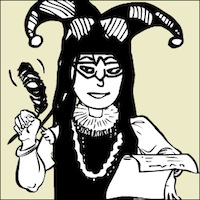The Bizarre Belly Flop of Devon Loch

In 1956, Elizabeth II had been queen for only four years, and steeplechase jockey Dick Francis had won more than 350 races. A couple of his wins were on Devon Loch, a bay gelding he was to partner in the Grand National. The horse himself had already won twice that season, and he had a famous owner: the Queen Mother, who was in the royal box that day – March 24 – with her two daughters. No wonder the crowd was abuzz.
 A Thoroughbred like Devon Loch weighs roughly 1,000 pounds and carries about 120 more in a race. Make the course 4-and-a-half miles long, and punctuate it with fences and ditches, and you have the Grand National at Aintree, near Liverpool – the longest steeplechase in the UK. (It’s the title race in National Velvet). Horse and jockey run two circuits, jumping most of the 16 fences twice. It’s grueling, and most don’t even finish the race.
A Thoroughbred like Devon Loch weighs roughly 1,000 pounds and carries about 120 more in a race. Make the course 4-and-a-half miles long, and punctuate it with fences and ditches, and you have the Grand National at Aintree, near Liverpool – the longest steeplechase in the UK. (It’s the title race in National Velvet). Horse and jockey run two circuits, jumping most of the 16 fences twice. It’s grueling, and most don’t even finish the race.
Yet Devon Loch was prepared, as was his rider. As Francis wrote in his autobiography, The Sport of Queens, he planned carefully for the National because “it is not really very sensible to start off in any race without some idea of what one is going to do.” True enough: there was no problem at the start of the race. The favorite to win dropped out on the first lap, and so did a previous winner. And although Francis felt the weight of responsibility – he was riding for royalty, after all – Devon Loch made the race “a delight.”
“He cleared the formidable Aintree fences as easily as if they had been hurdles,” wrote Francis. “He was so intelligent at the job that all I had to do was ride him quietly and let him jump.” Devon Loch even swerved mid-air when a horse stumbled in front of him at Fence 11. When he reached the final obstacle, he leaped “stylishly, as if it had been the first of 30 instead of the last.” He pulled away from E.S.B., the horse trailing him, and the crowd grew ecstatic. Victory lay only a few hundred yards away.
Unfortunately, so did defeat.
At 50 yards from the winning post, Devon Loch was far enough ahead of E.S.B. that the news camera shows only him in the center of the screen. And what it shows is this, as Francis describes: “In one stride he was bounding smoothly along, a poem of controlled motion; in the next, his hind legs stiffened and refused to function. He fell flat on his belly, his limbs splayed out sideways and backwards in unnatural angles.” Devon Loch belly-flopped onto the turf.
‘What happened?’
Keep watching the video of the newsreel, and you’ll see the horse get back up within seconds, rider still mounted. Yet, even as he does, E.S.B. breezes by, going on to win the 1956 National. Devon Loch and Francis never finished the race.
Devastated, Francis told their majesties he was “desperately sorry,” he wrote in his book, but the Queen Mother kept calm and replied: “That’s racing, I suppose.” Yet how could he take the bizarre collapse in his stride when, later in the stables, he watched Devon Loch placidly munching hay while being groomed? The horse was tired but not injured. He had walked to the stables from the course without a problem. The jockey leaned his head on his partner’s neck and thought, “Devon Loch, what happened?” The horse carried on chewing.
It would take Francis decades to recover, partly because he was at the epicenter of the unsolvable mystery. Theories abounded. Heart attack? Devon Loch’s breathing hadn’t been labored. Cramps? Maybe, but why had he pricked his ears before collapsing? Spooked, perhaps, by the shadow of Fence 16, which he didn’t have to jump on the home stretch? From Francis’ considerable experience, no horse would “start to take off with his weight all in the wrong place.” None of these conjectures was unassailable.
Francis, who would enjoy a second career as a successful mystery writer, had a theory of his own. After he and his partner cleared the last fence, the cheer from the stands grew to a crescendo as hundreds of thousands of spectators braced to witness a royal victory. Weather reports apparently showed a breeze blowing from behind those stands, and this amplified the roar over the racecourse, causing Devon Loch’s ears to prick up and his hind legs to seize up mid-stride. Belly flop. Felled by a sound wave of support. According to the Guardian news report that day, the crowd then “gave a loud ‘Ah!’ of dismay and crumpled into silence.”
“To do a Devon Loch” went on to enter the British-English lexicon, referring to the sudden failure of an expected win. Still, Francis considered his former racing partner “noble and courageous.” He predicted that Devon Loch would be remembered, even if news articles only “mention his tragedy as a curious event in a distant past.” He was right. National winners are plenty, but the 1956 race belongs to Devon Loch, the grandest loser in racing history.
Watch an abridged version of the news footage on YouTube, and the original version on the British Pathé site. The image of the racecourse above is in the public domain on Wikipedia.
 A Thoroughbred like Devon Loch weighs roughly 1,000 pounds and carries about 120 more in a race. Make the course 4-and-a-half miles long, and punctuate it with fences and ditches, and you have the Grand National at Aintree, near Liverpool – the longest steeplechase in the UK. (It’s the title race in National Velvet). Horse and jockey run two circuits, jumping most of the 16 fences twice. It’s grueling, and most don’t even finish the race.
A Thoroughbred like Devon Loch weighs roughly 1,000 pounds and carries about 120 more in a race. Make the course 4-and-a-half miles long, and punctuate it with fences and ditches, and you have the Grand National at Aintree, near Liverpool – the longest steeplechase in the UK. (It’s the title race in National Velvet). Horse and jockey run two circuits, jumping most of the 16 fences twice. It’s grueling, and most don’t even finish the race.Yet Devon Loch was prepared, as was his rider. As Francis wrote in his autobiography, The Sport of Queens, he planned carefully for the National because “it is not really very sensible to start off in any race without some idea of what one is going to do.” True enough: there was no problem at the start of the race. The favorite to win dropped out on the first lap, and so did a previous winner. And although Francis felt the weight of responsibility – he was riding for royalty, after all – Devon Loch made the race “a delight.”
“He cleared the formidable Aintree fences as easily as if they had been hurdles,” wrote Francis. “He was so intelligent at the job that all I had to do was ride him quietly and let him jump.” Devon Loch even swerved mid-air when a horse stumbled in front of him at Fence 11. When he reached the final obstacle, he leaped “stylishly, as if it had been the first of 30 instead of the last.” He pulled away from E.S.B., the horse trailing him, and the crowd grew ecstatic. Victory lay only a few hundred yards away.
Unfortunately, so did defeat.
At 50 yards from the winning post, Devon Loch was far enough ahead of E.S.B. that the news camera shows only him in the center of the screen. And what it shows is this, as Francis describes: “In one stride he was bounding smoothly along, a poem of controlled motion; in the next, his hind legs stiffened and refused to function. He fell flat on his belly, his limbs splayed out sideways and backwards in unnatural angles.” Devon Loch belly-flopped onto the turf.
‘What happened?’
Keep watching the video of the newsreel, and you’ll see the horse get back up within seconds, rider still mounted. Yet, even as he does, E.S.B. breezes by, going on to win the 1956 National. Devon Loch and Francis never finished the race.
Devastated, Francis told their majesties he was “desperately sorry,” he wrote in his book, but the Queen Mother kept calm and replied: “That’s racing, I suppose.” Yet how could he take the bizarre collapse in his stride when, later in the stables, he watched Devon Loch placidly munching hay while being groomed? The horse was tired but not injured. He had walked to the stables from the course without a problem. The jockey leaned his head on his partner’s neck and thought, “Devon Loch, what happened?” The horse carried on chewing.
It would take Francis decades to recover, partly because he was at the epicenter of the unsolvable mystery. Theories abounded. Heart attack? Devon Loch’s breathing hadn’t been labored. Cramps? Maybe, but why had he pricked his ears before collapsing? Spooked, perhaps, by the shadow of Fence 16, which he didn’t have to jump on the home stretch? From Francis’ considerable experience, no horse would “start to take off with his weight all in the wrong place.” None of these conjectures was unassailable.
Francis, who would enjoy a second career as a successful mystery writer, had a theory of his own. After he and his partner cleared the last fence, the cheer from the stands grew to a crescendo as hundreds of thousands of spectators braced to witness a royal victory. Weather reports apparently showed a breeze blowing from behind those stands, and this amplified the roar over the racecourse, causing Devon Loch’s ears to prick up and his hind legs to seize up mid-stride. Belly flop. Felled by a sound wave of support. According to the Guardian news report that day, the crowd then “gave a loud ‘Ah!’ of dismay and crumpled into silence.”
“To do a Devon Loch” went on to enter the British-English lexicon, referring to the sudden failure of an expected win. Still, Francis considered his former racing partner “noble and courageous.” He predicted that Devon Loch would be remembered, even if news articles only “mention his tragedy as a curious event in a distant past.” He was right. National winners are plenty, but the 1956 race belongs to Devon Loch, the grandest loser in racing history.
Watch an abridged version of the news footage on YouTube, and the original version on the British Pathé site. The image of the racecourse above is in the public domain on Wikipedia.
You Should Also Read:
Seabiscuit – Film Review
Secretariat Reborn Review
The Galway Horse Races

Related Articles
Editor's Picks Articles
Top Ten Articles
Previous Features
Site Map
Content copyright © 2023 by Lane Graciano. All rights reserved.
This content was written by Lane Graciano. If you wish to use this content in any manner, you need written permission. Contact Lane Graciano for details.







